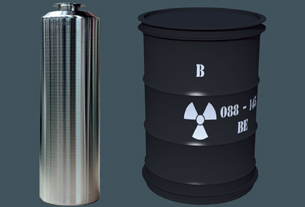High-level and/or long-lived Waste
Radioactive waste is generated from many nuclear applications, such as the production of electricity in nuclear power plants, the decommissioning of nuclear facilities and the use of radioactive materials in research, industry and medicine. Some of this waste contains substances that remain radioactive for hundreds of thousands of years; in other words, it is said to be “long-lived”. A small proportion, such as the vitrified waste (waste that has been embedded in glass) resulting from reprocessing spent nuclear fuel, is highly radioactive. This type of waste emits radiation at a very high energy level and consequently gives off heat. High-level waste contains both long-lived and short-lived radioactive substances.
You can find out more about radioactive waste in Belgium on the ONDRAF/NIRAS website.
High-level and/or long-lived waste is placed in suitable waste packaging containers, which are then temporarily stored in special buildings on the ONDRAF/NIRAS site in Dessel, operated by Belgoprocess. Interim storage guarantees safety in the short and medium term (for up to 100 years or so). A long-term solution, however, would have to ensure that people and the environment were protected for hundreds of thousands of years without the need for any active human intervention.

Containers for high-level and/or long-lived waste
